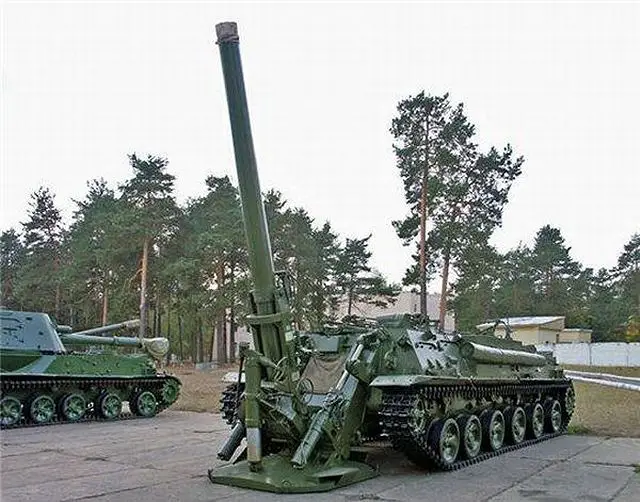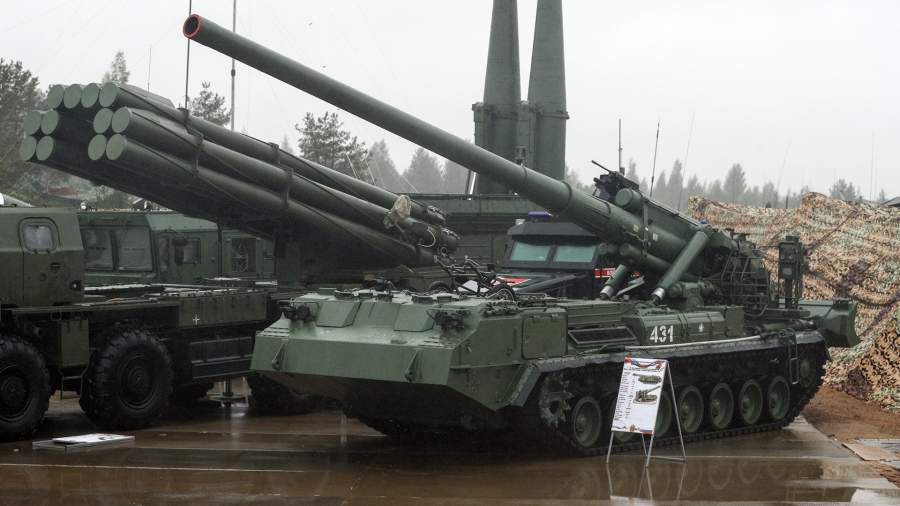I think the increased range and accuracy of 120mm and 152mm rounds will mean they will continue to be developed and will be the normal widely used calibres... this is no huge jump in the dark as the Soviet military settled on 120mm mortars and 152mm and 203mm guns during WWII.
the new weapons are much more accurate, much longer ranged, and still effective, if not more so today.
They might experiment with a 240mm and a 203mm Armata vehicle but I suspect the standard Armata units will start with 125mm tank guns and 120mm gun/mortars and 152mm artillery.
In time perhaps they might eliminate the 125mm calibre and replace it with a 152mm calibre tank gun, but there is currently no hurry as most potential opponents can still be engaged effectively with 125mm rounds... the sooner they start adopting the 152mm gun the sooner NATO goes for a new improved tank design... their 152mm tank gun is pretty much ready but upgrading the 125 is easier and cheaper and leaves a next step available when needed.
I think they will just continue with 2S4 and 2S7 in reserve for those situations when larger calibre weapons are needed and just upgrade the ammo so if a larger calibre Armata is needed it will have ready to use quality ammo.
From the discussion i can see the clear use and niche role the 2s4 has. Though i am not sure what niche role the 2s7 has - i know it might be clear to others but its not so in my mind.
I mean if it can fire 90-100km .... so can mrls
If it can deliver large shell 203mm so do mrls 220mm and 300mm
Im not clear on what 2s7 niche role is
Don't fixate on max range as the only useful number.
For many targets a 40kg projectile is enough to get the job done, but there are occasions when it is not, and two impacts of 40kg shells does not equal the impact of one 80kg projectile.
The Pion fires 110kg projectiles.
The Tulip is even more powerful but over much shorter ranges... the problem with most artillery rounds is that they come from what would be called guns... the need for range means they have rather higher velocity than similar weapons from WWI and WWII. The higher velocity and range means when fired at shorter range they need to be lofted high into the air... which reduces accuracy because they spend a lot of time in flight or they are more direct fired at the target which means half the shell fragments go into the ground and the other half go into the sky.
In comparison a 130kg 240mm mortar bomb that lands near vertically on the target sprays its fragments in a nice even pattern around the point of impact... look at artillery shells and you will notice it is the long sidewalls that contain all the fragments that actually kill people... a near vertical impact means most efficient use of propellant and fragments.
Blast kills only to fairly short ranges but heavy fragments extend that kill range to 10-20 times the blast radius... up to 100m in some cases, but a 152mm shell coming in at an angle wont... most fragments will go into the ground or into the air and it will be blast radius that kills... maybe 10-20m... which is rubbish performance.





 . I think that having more such units would be great. In conflicts – especially in low intensity ones – heavy artillery pieces like the 2S7 Pion/Malka and the 2S4 Tyulpan would provide air strike-like firepower, albeit at a limited range, but at a fraction of its cost. Guided shells would make them even more effective.
. I think that having more such units would be great. In conflicts – especially in low intensity ones – heavy artillery pieces like the 2S7 Pion/Malka and the 2S4 Tyulpan would provide air strike-like firepower, albeit at a limited range, but at a fraction of its cost. Guided shells would make them even more effective. , but I think that a handful of these systems could be supplied to Syria to take out fortified positions of ISIS and rebels.
, but I think that a handful of these systems could be supplied to Syria to take out fortified positions of ISIS and rebels.
